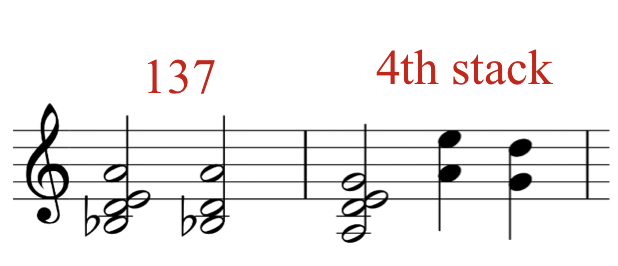Ahmad Jamal - 1955
‘New Rhumba’ was the first song on Ahmad Jamal’s first album and it was clear right from the start that, in fact, he did have something new to say.
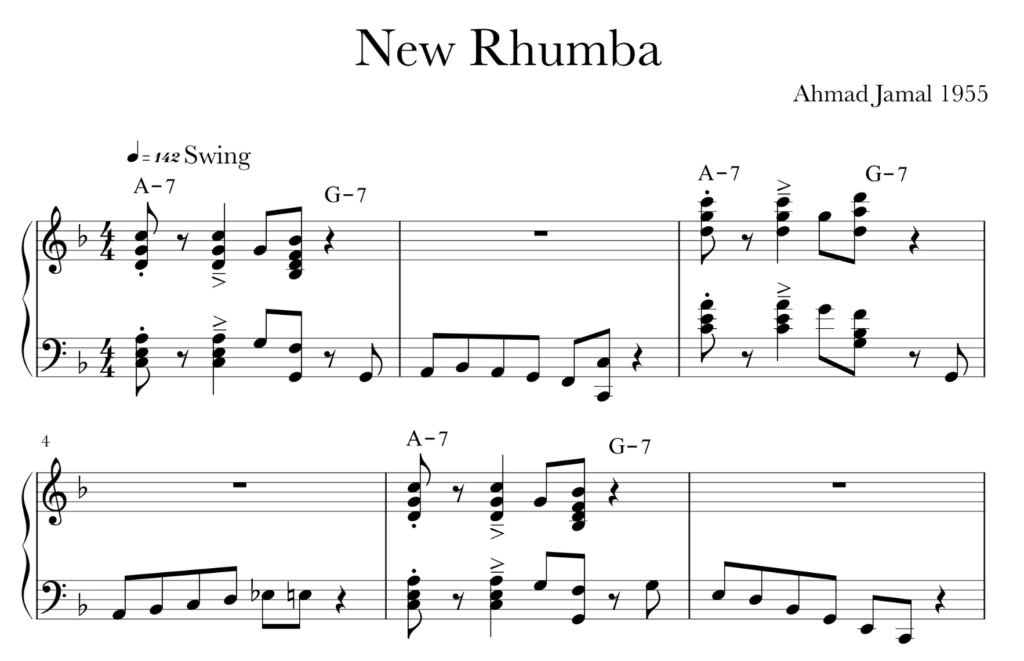
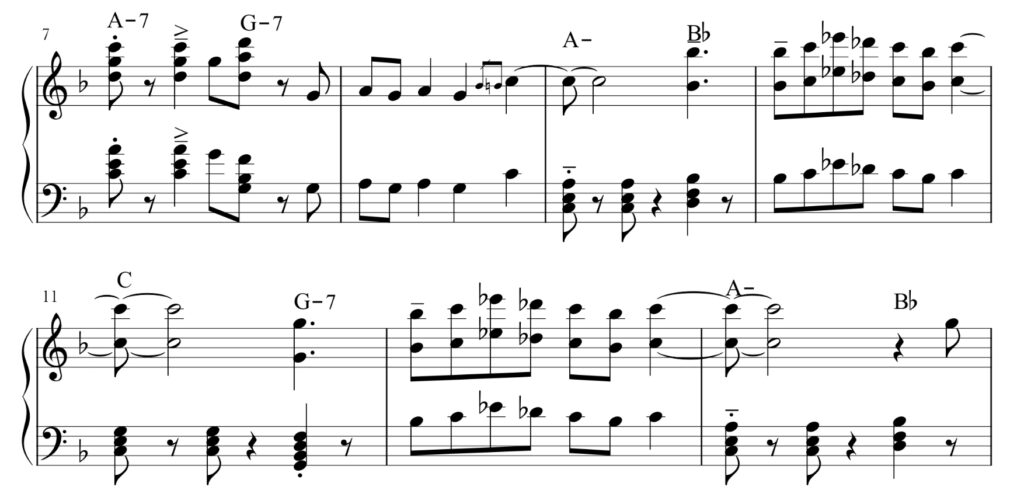
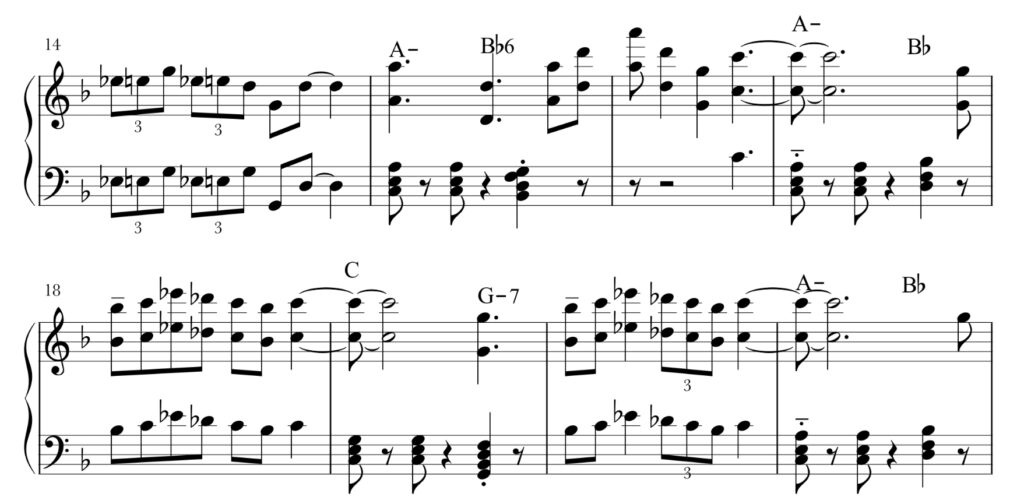
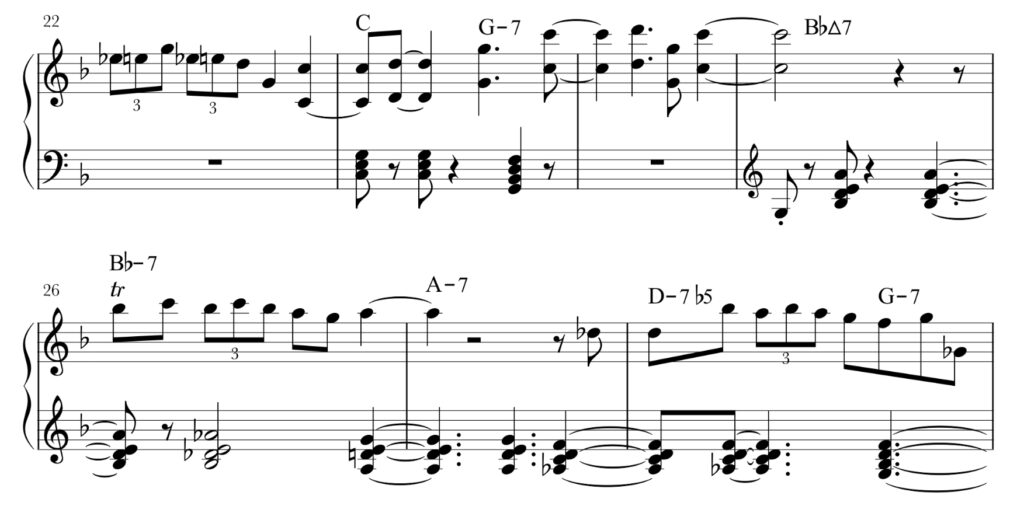
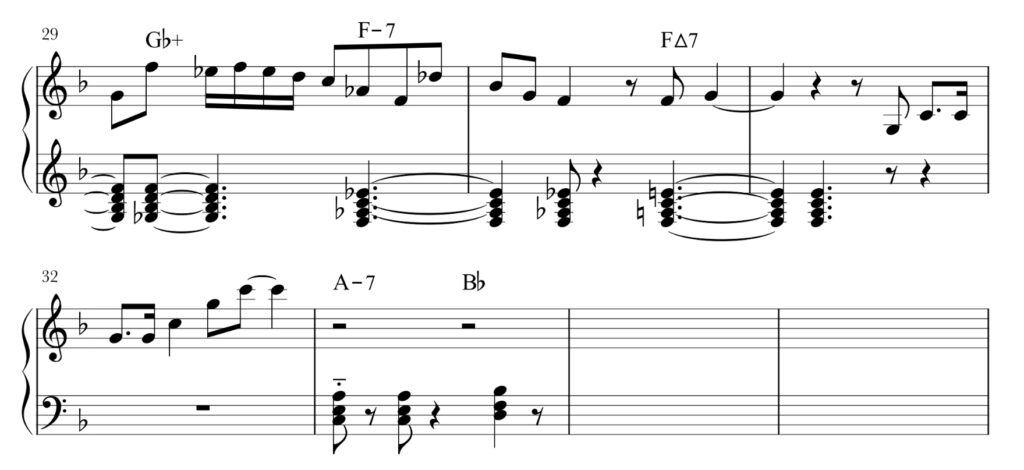
The first chord of ‘New Rhumba’, with it’s stacked 4ths (a-d-g-c), must have sounded very new in 1955. By 1970 chords built on 4ths were being played by virtually every jazz piano player alive. Ahmad Jamal’s fresh new sound seemed to arrive on the scene fully formed. He clearly intended to open things up both horizontally and vertically. Time and silence were meant to be savoured. The trio repeats the opening riff eight times before Jamal plays the second motif in octaves (more vertical space). This cool, unhurried approach to Jazz piano became incredibly popular and, it turns out, influential.
Before we get going with some analysis we need to make a few quick observations: (1) There are a lot of indeterminate chords here (Link), so the chord names are open to interpretation. Some of the names I am using are not what you will find on other transcriptions, and I haven’t spelled out the upper structure additions to the names so the basic structure is clear. (2) Bb7 and Gm7 are ‘Sister Chords’ (Link) so they are somewhat interchangeable.
The basic chord structure can be seen in bars 9 & 11. Example 1 shows us that, if we think of the Gm as a Bb for a moment, the tonic Bb is approached stepwise, first from below (A to Bb) and then from above (C to Bb).

The introductory vamp is a slight variation on the structure shown in Example 1. The vamp uses the ‘Tonal Palette’ of Bb Lydian with it’s ‘e’ rather than the ‘e flat’ in Major. It is interesting to note that George Russell’s influential book “Lydian Concept of Tonal Organization” was published in 1953 and Jamal’s ‘New Rhumba’ was recorded in 1955 – coincidence?

Jamal immediately starts messing with the Lydian mode when he plays the melody (bar 10). It starts a ‘Call and Response’ pattern where the Call is in Bb Melodic Minor and Response is still in Lydian. In bar 14 the melody uses both modes, both the e flat and the e are used and he plays the d natural.

The B-section is no less masterful than the A. Example 4 isolates the chord progression. It demonstrates the importance of common tones and good voice leading when using indeterminate chords. The bass movement is chromatic making the progression easy to follow. The middle of the passage uses part of a Cycle chain, further leading a familiar feel.
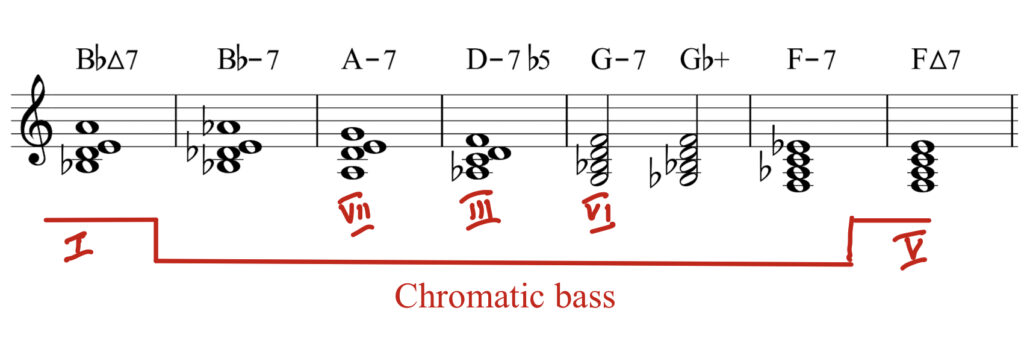
The chords in Example 4 use three different chord types. Bars 5, 6 and 7 use stacked thirds. Bars 1, 2 and 4 uses 1-3-7 chords and bar 3 uses a 4ths stack (Link). Example 5 shows us where the 1-3-7 is in bar one. The 4th stack has a perfect fifth on ‘a’ and ‘g’. The chord can function as a A7, Am7, G7 or Gm7 among others!
